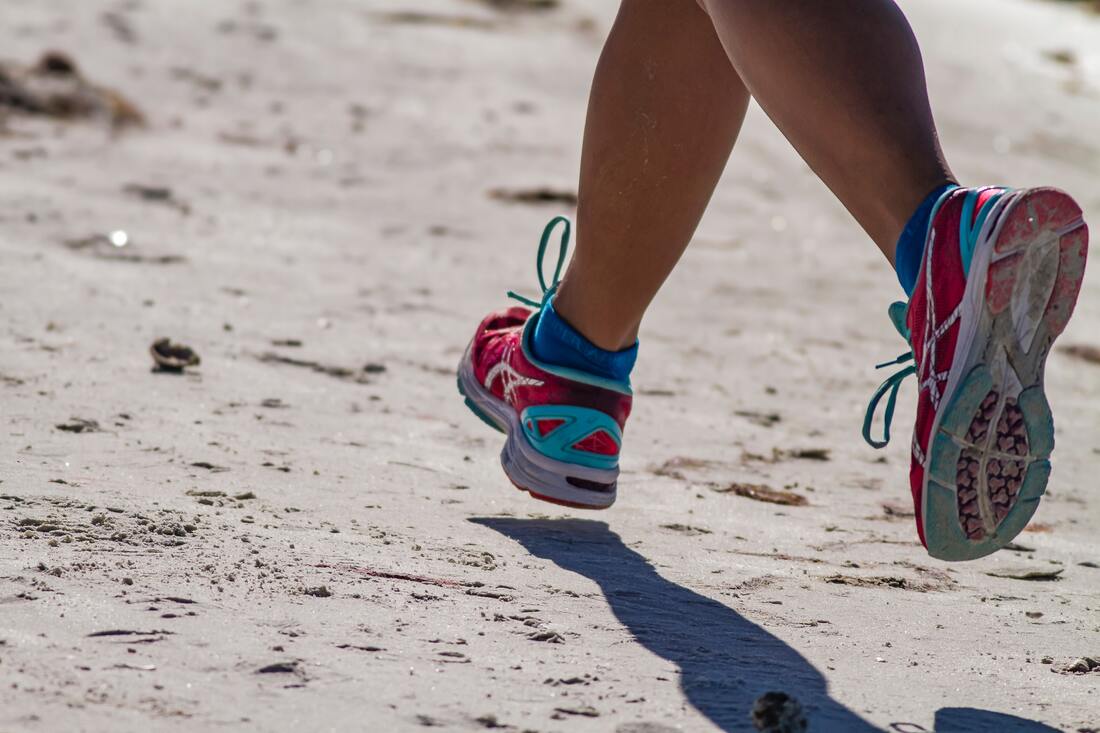|
SEARCH My Blog (Opens in new tab)
Managing fatigue, rest, recovery and technique to avoid injuries Photo by Dulcey Lima on Unsplash On my local running trails, people know me as the old guy that runs daily. Some shake their head in disbelief as this 72-year old makes a good pace along the track, and some shake their head in disbelief that I should be so foolish. (MostlyI get cheery smiles and nods.) What I notice is how many other runners fall by the wayside, with injuries. Running every day is fine if you can do it without injuring yourself. Here's how I manage fatigue, rest, recovery, awareness, breathing and natural time to avoid injuries. Why would you want to run every day?The vast majority of running advice is not to run every day. I agree with that advice. To run every day, you need to be very mindful of how to do it without injury. There are subtle personal balances that require you to be mindful even in applying the advice. What works for me may not work for you, unless you feel your way into it. So why would anyone even want to run every day? BECAUSE YOU CAN. Being able to run every day is a giftBeing able to run every day is a blessing, a gift - even more so in this time of the pandemic. Doing so resets your sanity, your health, and your optimism - and burns away those stress-relief calories that we've consumed. That said, running 5km a day is taxing. It fatigues your muscles, bones nervous system and immune system. Here's my program, covering preparation, mindset, technique, coursework, and rest and recovery. Just a quick dip into my backstory - I hated running until I was 70 - I hated it at the gym, and I didn't run outside. Then, 2 1/2 years ago (just before Xmas in December 2017), I started running twice a week. It took me more than 6 months to get to 5kms on local running trails. During this time, I did strength training, kettlebells, Spin interval training and rowing 3 days a week at the gym. I ran hard, and I injured myself a few times, once putting myself out for 6 weeks. I eventually ran 10km a couple of times but didn't enjoy it. In mid-December 2019 I decided to run 5km every day. These are the lessons of my journey from them to today - injury-free. 1. Warming upWe'll start at the beginning - warming up. I warm up for about 10 minutes. I've never met another runner that says that they warm up properly. They say:
I'll spare the details but warming up is about lubricating the joints, warming your muscles, tendons, cartilage and other tissues, getting your blood flowing and heart pumping gently and mobilising all the articulated parts of your body. I mobilise my neck, shoulders, back, lower back, hips, knees, shins, ankles and feet, plus all the posterior and anterior muscle chains, especially hamstrings and hip flexors. Then I do a kettlebell routine with 7 to 9 sequences that always includes basic swings. Then I do sideways steps both directions, cross-overs both directions, and out the front gate. 2. On the trailWhen I ran twice a week, I'd run for time. I'd push for faster times - trying to hit 4:10/km on the faster sections, and always push over the last 500m to ensure a pace lower than an average of 4:50 / km. That leads to injury from muscular and joint fatigue. Running every day requires running to your natural time on the day. You get some idea of this when you are warming up - your energy level, what bits niggle, how focused you are, where your mind is. I usually run at a pace of 5:20km now, way down from 4:50 before. As you run you tune in over the first 1km feel into the type of run that is going to work best for you. An absolute key is to establish your rhythmic breathing right out of the gate. Without rhythmic breathing, you are not going to run injury-free, because breathing stress will distract you from flowing with the course. I focus on relaxing my neck, and my hands - imagine holding crisps in each hand. Get your stride working for the natural time that works on the day. As you hit 2km your body awareness should be fully tuned in. As little pains and twitches pop up, feel your way through them. Change the angle of your feet, the strike of your feet, the power of your arms, the spring of your Achilles tendon, the deepness of your breathing - and settle in to your natural time for the day. Variation is important. Each run is different because you feel differently every day - your natural time is different every day. Some days you accelerate out of the bends and up the inclines, and through the sandtraps. Others you run a satisfying steady pace the whole way. The variation, the adaption to your natural time, your body awareness, the ability to feel into the twitches and aches, and your rhythmic breathing, are vital elements of remaining injury-free. Some days I include running backwards up ramps, other days I include sections running on the beach. It comes to me during the first one kilometre. Run home strongly but according to your natural time for the day. 3. Warming downI warm down for about 10 minutes. It's similar to my warm-up but stretching rather than mobility, including more lower-back stretches, hip-flexor, hamstring, ITB, Psoas, and groin. 4. Rest and recoveryWhen we're older, we need more rest and recovery. For me, rest comprises sleep. I aim to sleep between 7 and 9 hours each night. Recovery is walking. I run 5km every day, and I walk 5km every day. In winter, I run in the hottest part of the day and walk just after dawn. In summer, I run at dawn and walk in the early evening. I walk using a technique which aids recovery - I call it proper walking. Proper walking is what we do as kids before we get into the bad habit of dragging ourselves forward instead of pushing ourselves forward. Dragging yourself forward when walking is the equivalent of shuffling when you run. You can hear the toes scrape into the ground as people do that. It's not actually running it is jogging faster. When running, you propel yourself off the elastic rebound of your Achilles tendon - walking properly assists that technique, and it assists recovery from running. If I have any feeling of muscle pain from exertion - perhaps from sprinting up stairs or ramps - I take a cold bath. Use a water temperature of 10-15C for 10 to 15 minutes. This technique is proven to be the most effective way to lessen and shorten delayed onset muscle pain. I rarely experience DOMS now, but I used to feel it when I ran for time. Find your mojo to run every dayThese techniques work for me, enabling me to run every day injury-free. Every part matters. The warm-up matters, the breathing matters, running at your natural time matters, awareness matters, as does variety and fine tuning your running every time. Your warm-down matters, and rest and recovery is critical. None of those can be skipped if you want to remain injury-free. Every night when I close my eyes, I look forward to running the next day. I don't have a plan. A plan evolves as I warm-up, and as I run the first kilometre. Hopefully, you can find your mojo and run every day and enjoy the pleasure of moving your body daily. Good luck > More posts to help you with EXERCISES > More posts to help you with DIABETES > If you are a @MEDIUM reader my publication Body Age Buster has hundreds of categorised posts which I have written especially for men and women over 50 Follow me on Quora for more health and fitness tips.
If you valued this article >> Follow me Leave a comment >> Share it >> Stay healthy If you have any questions email me and I will get back to you. Latest: get your free customised fitness plan designed uniquely for you.
|
ChoicesSince I was diagnosed at 50 with Type 2 diabetes I've been learning how to do bone-building fitness training which lowers my age. You can too. It's your choice. Walter Categories
All
Archives
May 2023
|
 RSS Feed
RSS Feed



